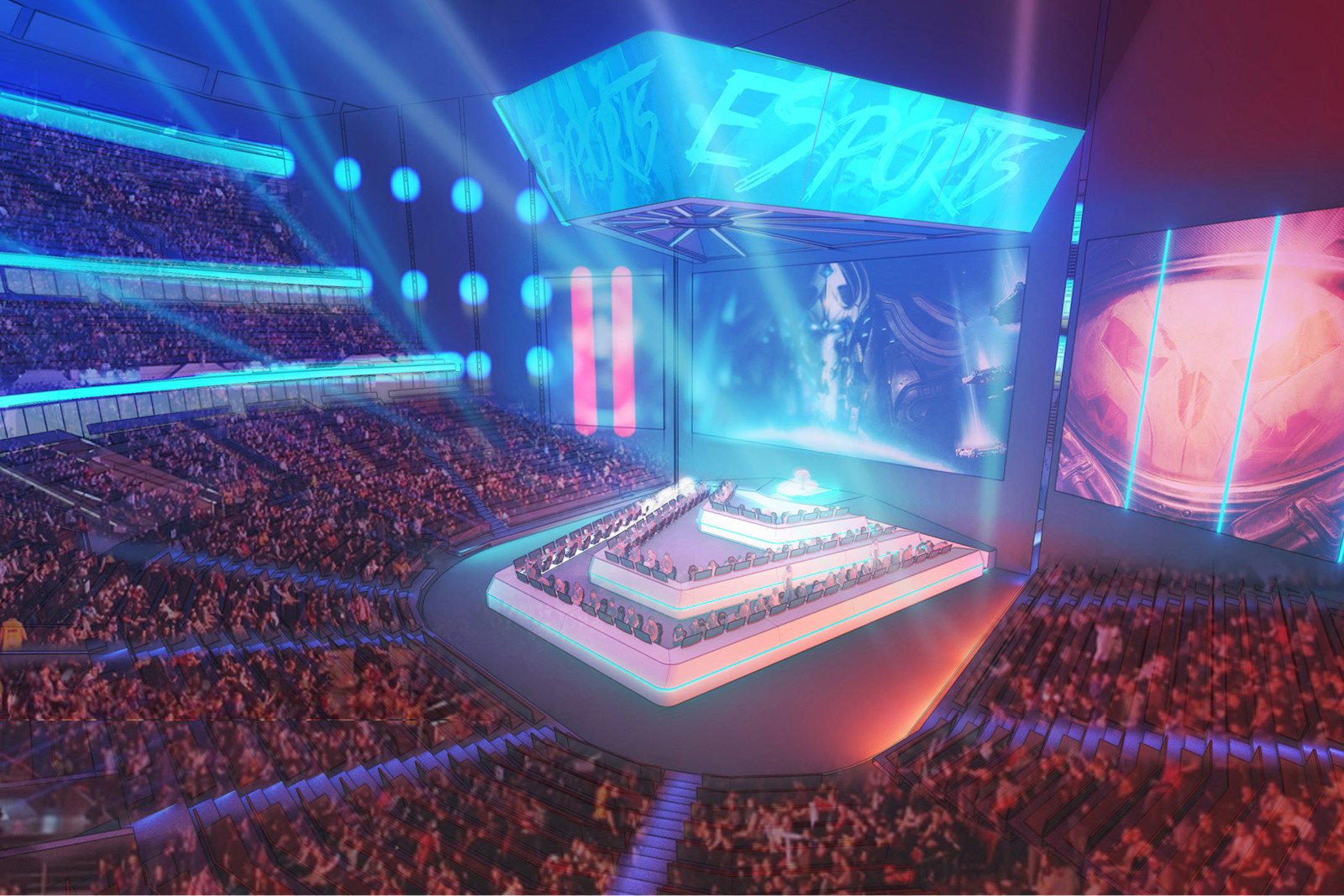The World Series of Poker. The X Games. The National Geographic Bee. Some of the biggest names in nontraditional sports have arrived on television via 441 Productions and M&M Productions.
Rashed Singaby, an architect with HOK’s Sports + Recreation + Entertainment practice, talks to 441’s Matt Maranz and M&M’s Mark Mayer about the growth of esports, its fans and the ideal venues for hosting live gaming events.
How does producing an esports event for broadcast differ from producing traditional sporting events?
Mayer: In some ways it’s similar to traditional sports: Tell good stories and get people invested in the outcome. However, with esports you are not playing to a broad base. You are trying to satisfy the hardcore fans. Innovation needs to focus on delivering more information about what’s happening within the game, with less attention spent on aesthetics and presenting the personalities. If the event looks epic and technology has no glitches, that’s a great show for an esports fan.
Maranz: Unlike traditional sports, esports fans often are players first and fans second. The biggest football fans in the world aren’t out playing football every day. But that’s what esports fans are doing. They engage with the sport from a different perspective than traditional sports fans. They’re always playing. We often see people watching an event while playing.
What opportunities do you see for esports?
Mayer: The number of people playing video games, both as amateurs and professionals, is growing exponentially each year. Participation now dwarfs involvement in traditional ball-and-stick sports for both youth and adults, and that spread gets bigger every time it’s measured. This creates tremendous opportunities for the industry. The challenge for esports is to convert more of these amateur players into viewers of the professional esports leagues of the games they love.
Maranz: For game publishers, the opportunities are enormous. Imagine if you had to pay the NBA every time you played basketball. You can’t play video games without paying the publishers. So esports is an incredible marketing vehicle for game makers.
Mayer: Esports isn’t one entity but rather dozens and dozens of different professional leagues, each with its own fan base. The international fan base is so large that the ability to create revenue from broadcast rights and live events is sizable. Just ask the people at Riot Games producing League of Legends. In the States, the esports industry seems to be moving more toward involving the general public in professional events to create a larger, more invested fan base. Fortnite has latched onto the concept, breaking into the mainstream by creating opportunities for open participation and crowd-generated content.
How do you convert existing convention centers, studios or arena spaces into broadcast-ready esports venues?
Maranz: Bandwidth is imperative to ensure there is no lag in the game. Beyond that, there always seems to be a battle for space. You need to allocate areas for player warm-ups and spaces for various broadcast and press functions, such as editing and interviews. Screens are a huge priority, as they are the only way for fans to watch a game. Once the action starts, most fans are looking primarily at the screens.
Mayer: These venues need to be designed so every seat can see both the competitors and a screen. Because of the diversity of back-of-house spaces needed, as Matt mentions, there usually have to be compromises about who gets what. These back-of-house needs differ drastically from esport to esport.
Maranz: Another concern is transforming the space into an environment befitting the game. This goes back to fans coming from a player-first mentality. They want the entire venue to feel like an extension of the game. From a set design perspective, you’re not just thinking about the stage—it’s the entire space.
What makes an ideal venue for production purposes?
Mayer: Domestically, a modular 2,500-5,000-seat arena that can scale down without feeling empty would be ideal. These events would benefit from multiple stages and control rooms to be able to hold simultaneous events and customized yet flexible hardware to service individual esport needs. In some international locations in Europe and China, the in-house capacity will need to be higher to account for the massive fan base.
Maranz: An ideal venue needs to be flexible. The playing fields for traditional sports like baseball, football, basketball or hockey haven’t changed much over time. The dimensions and design elements remain fairly constant. But esports are the opposite. Different games demand different “playing fields.” There’s so much variance from game to game, including the number of players. There’s no one size or shape that fits all esports events.
What are other challenges facing designers of esports facilities?
Mayer: Staying current and building modularly for technology advancements will be a significant challenge. The landscape changes so rapidly. It’s difficult to imagine building a space that won’t need major upgrades every few years.
Maranz: Facilities need to be prepared for games that don’t exist yet. Esports games come and go quickly. Three years ago, Overwatch was the rage. Now it’s the battle royale format popularized by Fortnite, which barely existed then. In video games, the next big thing is always coming. Facilities need to be prepared for the future—whatever it may be.
Related:
